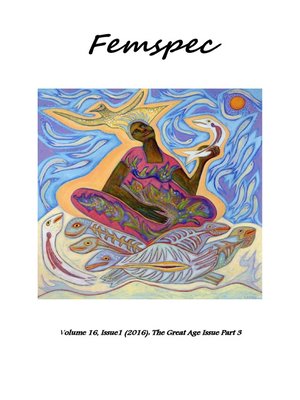Femspec 16.1 the Great Age Issue Part 3
ebook ∣ Introductions and Overview · Femspec Articles

Sign up to save your library
With an OverDrive account, you can save your favorite libraries for at-a-glance information about availability. Find out more about OverDrive accounts.
Find this title in Libby, the library reading app by OverDrive.



Search for a digital library with this title
Title found at these libraries:
| Library Name | Distance |
|---|---|
| Loading... |
An interdisciplinary journal dedicated to challenging gender through science fiction, fantasy, magical realism, surrealism, myth, folklore and other supernatural genres. Includes introduction, table of contents, best of third five years contest, and information about contributors.In this third installment of "The Great Age" series we present contributions addressing a wide variety of themes and genres interlinking age and ageing. These range from Hollywood's filmic adaptation of a modern sf novel that pitches an ageing witch-Queen against an eternally youthful star, through art by an older female artist that depicts the life force "in human, animal, and plant dwellers on our planet," to how we can teach the historical conscious-raising novels of the 70s in order to contextualize second wave feminism for younger generations. Furthermore, continuing the almost meta -textual examination of how we write and teach, an interview with Naomi Mercer discusses the process of writing her book, a visit by Margaret Atwood (born, 1939), and how sf can help challenge representations of older females in speculative literature. Finally, we include three pieces by Jenny Wrenn on her experiences of moving to China – a review of an exhibition, a photomontage, and a personal reflection – to detail how older women are treated in different countries, as well as demonstrating the strength and activities of the ageing feminist movement all across the world. Age and ageing in sf continues to be a fruitful and provocative topic here at Femspec and the publication of a third issue on this theme illustrates its continuing relevance in men and women's lived experience.







